Knowing how to store spaghetti squash, such as freezing spaghetti squash, is essential in keeping your vegetable fresh for longer. Not knowing how to properly store spaghetti squash may seem to be a daunting task, but in this step by step tutorial, we will teach you how to store your squash.
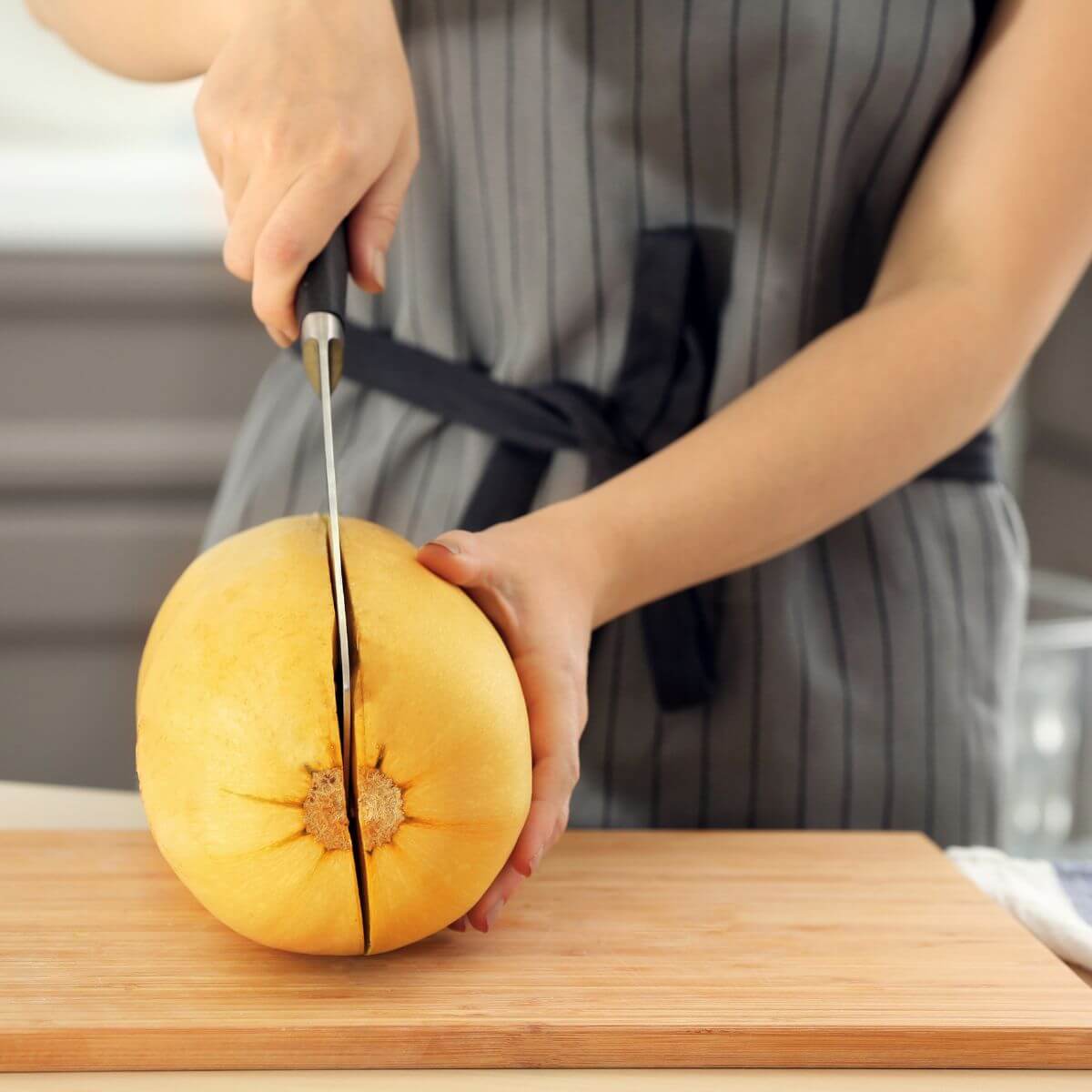
SAVE THIS RECIPE!
Enter your email below and we’ll send this recipe straight to your inbox.
Spaghetti squash is a versatile and healthy alternative to regular pasta, and it’s no wonder why it has become a staple in many households. However, storing spaghetti squash can be tricky, especially if you’re not sure how to do it properly. Proper storage is crucial if you want to keep your squash fresh for as long as possible and avoid any spoilage or waste.
Healthline details just how great spaghetti squash is, and why you should include it in your diet. It is a great alternative to pasta, and their article goes into detail as to why!
If you’re looking for a recipe that uses spaghetti squash, try this Spaghetti Squash Salad.
Why We Love Spaghetti Squash
We love spaghetti squash because of how delicious it is while still maintaining its nutritious value, versatility, and affordability! Spaghetti squash in place of pasta is something that we love about this vegetable as well, as its unique texture closely resembles that of pasta while being low carb and low calorie.
- Nutritious: Spaghetti squash is a low-calorie, nutrient-dense food, meaning it is a great source of several vitamins and minerals. In particular, spaghetti squash is a great source of pantothenic acid. It is also a good source of fiber, vitamin C, manganese, vitamin B6, and niacin.
- Versatile: One of the key benefits of spaghetti squash is its versatility in cooking. It can be roasted, boiled, microwaved or even cooked in the Instant Pot. Once cooked, you can use it as a base for salads or add it to soups and stews. You can also mix it with other vegetables and proteins to create hearty main dishes like casseroles or stir-fries.
- Affordable: What makes spaghetti squash particularly appealing is its affordability. Unlike other trendy superfoods that come with a hefty price tag. Spaghetti squash can be found at most grocery stores for an affordable price. One reason for spaghetti squash’s affordability is its availability. This vegetable is relatively easy to grow and harvest, making it more accessible than some of its pricier counterparts like kale or avocados. Additionally, because spaghetti squash has a longer shelf life than many other vegetables, it doesn’t require the same level of care and attention during transport or storage which helps keep costs down.
What is Spaghetti Squash
Spaghetti squash is a type of winter squash that has gained popularity in recent years as a healthy and low-carb alternative to traditional pasta. It gets its name from the fact that, once cooked, the flesh of the squash separates into long strands that resemble spaghetti noodles. Spaghetti squash is also known by several other names, including vegetable spaghetti, noodle squash, and squaghetti.
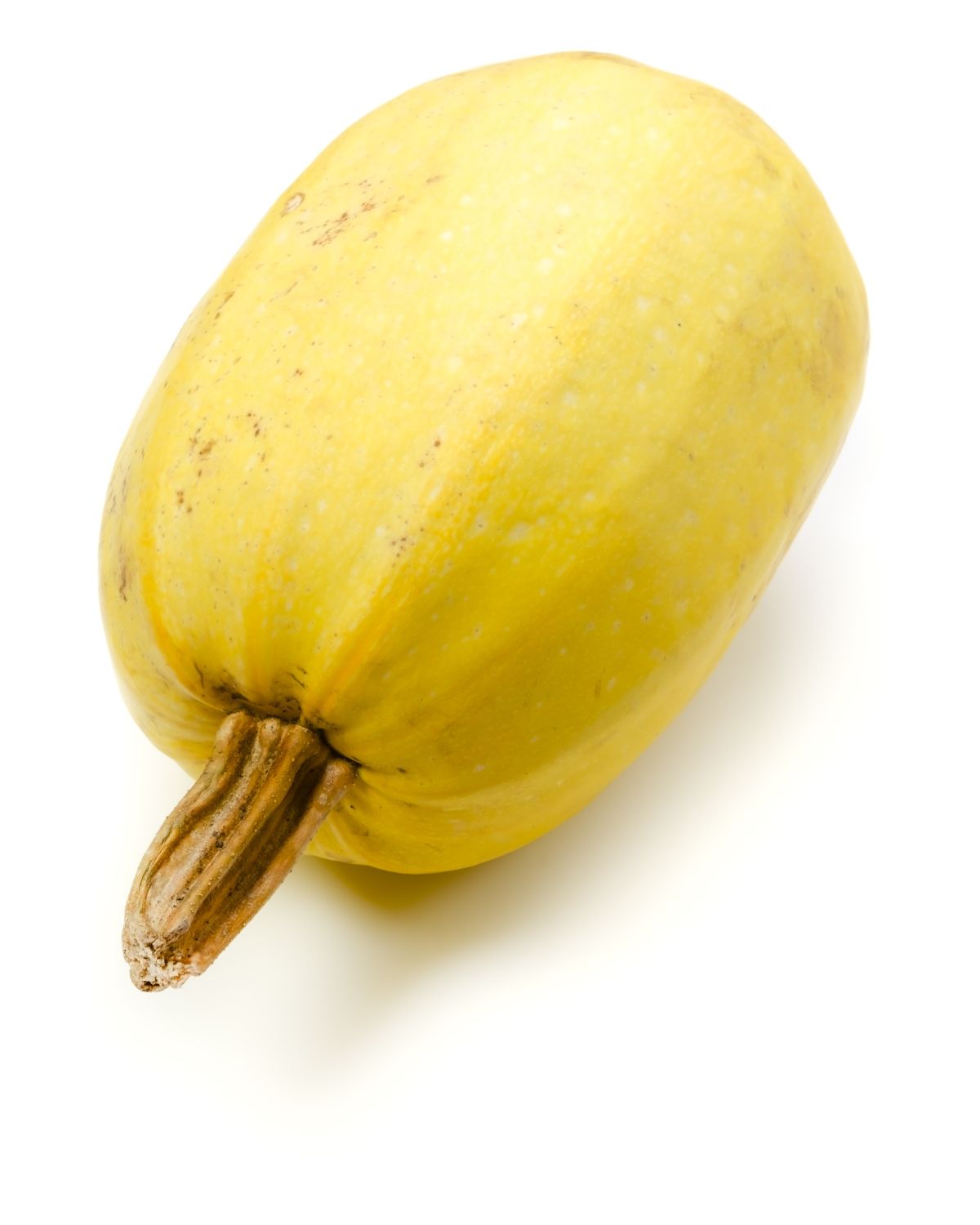
Types of Spaghetti Squash
- Ivory: This unique variety of squash has a smooth, ivory-colored exterior and a stringy, spaghetti-like interior when cooked. The flesh of the ivory spaghetti squash is slightly sweet and nutty, making it an excellent addition to any dish. One of the best things about ivory spaghetti squash is its versatility in the kitchen.
- Yellow: Yellow spaghetti squash, also known as vegetable spaghetti, is a type of winter squash that is similar in texture and appearance to traditional pasta. This variety of squash has a firm, thin flesh and a rich yellow color that make it an excellent substitute for traditional noodles or spaghetti. It’s low in calories and high in fiber, making it a healthy addition to any diet. Cook yellow spaghetti squash in a variety of ways including baking, boiling, or microwaving. When cooked properly, the flesh easily separates into long strands resembling thin noodles. These “noodles” are perfect for use in dishes such as stir-fries or casseroles where they absorb the flavors of other ingredients well. Additionally, you can use yellow spaghetti squash as a base for sauces or served simply with olive oil and Parmesan cheese for a delicious side dish.
- Orange: Orange spaghetti squash is a type of winter squash that has become increasingly popular in recent years. Known as vegetable spaghetti or noodle squash due to its stringy flesh, which resembles spaghetti noodles. The flesh of the orange spaghetti squash is bright orange in color and has a slightly sweet flavor. Roast, bake, boil, steam this versatile vegetable. It can be a healthy substitute for pasta and pairs well with sauces such as tomato or pesto. Additionally, you can enjoy it on its own with some butter and seasonings.
Benefits of Spaghetti Squash
- Benefit 1: Spaghetti squash is an excellent source of vitamins and minerals. It contains high levels of vitamin C, which helps to support your immune system and promotes healthy skin.
- Benefit 2: It is rich in potassium which aids in regulating blood pressure and maintaining healthy heart function.
- Benefit 3: Spaghetti squash is full of antioxidants such as beta-carotene and lutein. These antioxidants help to protect your body against harmful free radicals that can contribute to chronic diseases such as cancer and heart disease.
How to Store Spaghetti Squash
Spaghetti squash is a versatile and nutritious vegetable. However, if you don’t store it properly, it can spoil quickly and lose its flavor and texture. Here are some tips on how to store spaghetti squash so that it stays fresh for longer.
These are the basic steps for how to store spaghetti squash. Refer to the full, printable recipe card below for detailed instructions.
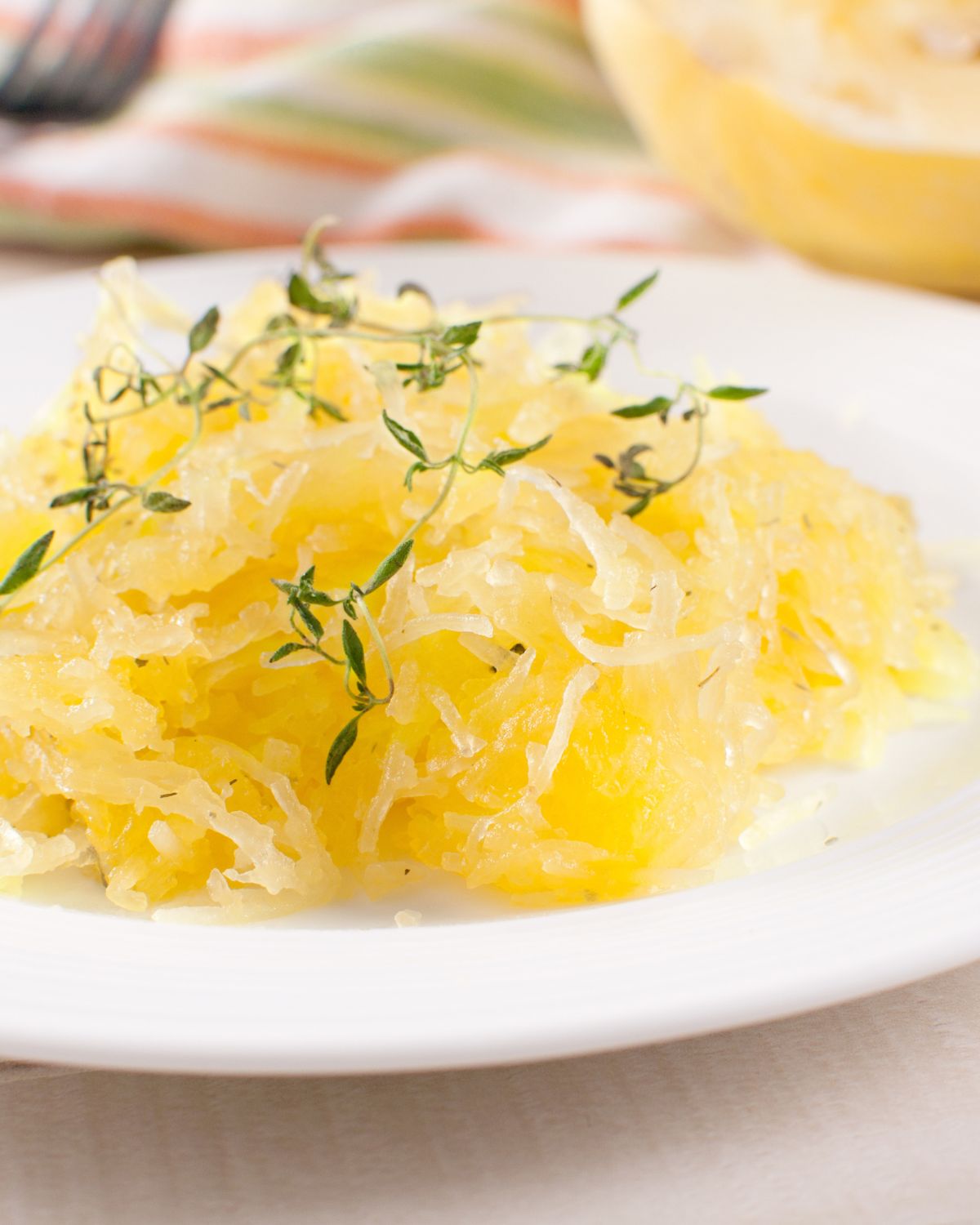
Step 1: freezing spaghetti squash
If you cooked your spaghetti squash but do not plan to consume it right away, place in an air tight container and place in the freezer. Your squash will last up to six months frozen.
A second method is to place the “noodles” into a freezer safe bag, squeeze all of the air out of the bag, and place in the freezer.
If your spaghetti squash has not been cooked, just place your whole squash in the freezer. This will last for up to a year.
To thaw, place in the refrigerator overnight.
Step 2: storing in the refrigerator
If you’ve already cook the spaghetti squash, store in the refrigerator. Just place it in an airtight container and it should stay fresh for up to a week.
Step 3: uncooked spaghetti squash
When storing uncooked spaghetti squash, the best place to keep it is in the pantry in a cool, dry place. This will help it stay fresh for longer.
Make sure to check it regularly for signs of spoilage, such as mold or soft spots. Your squash will stay fresh this way for up to 3 months.
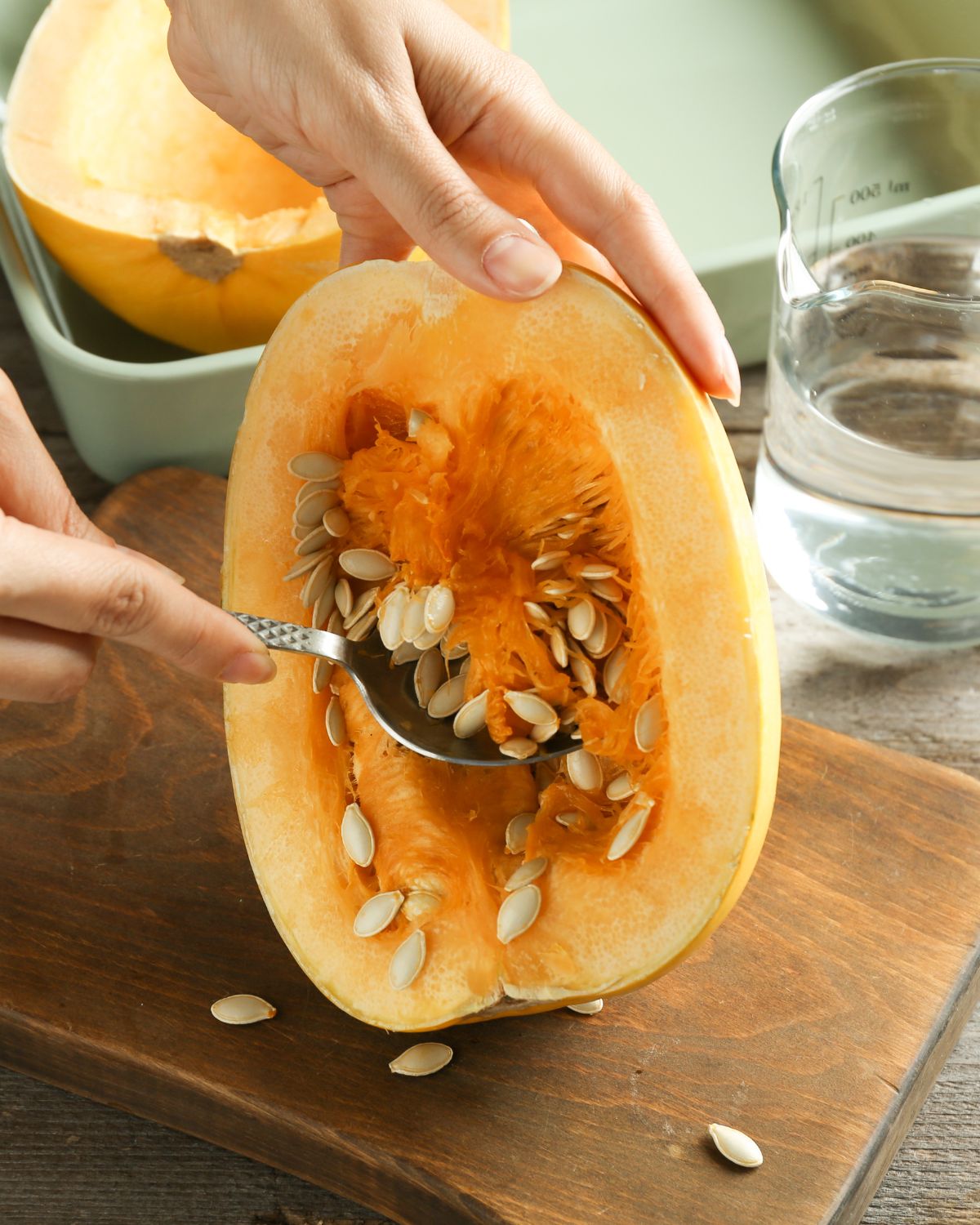
Spaghetti Squash FAQs
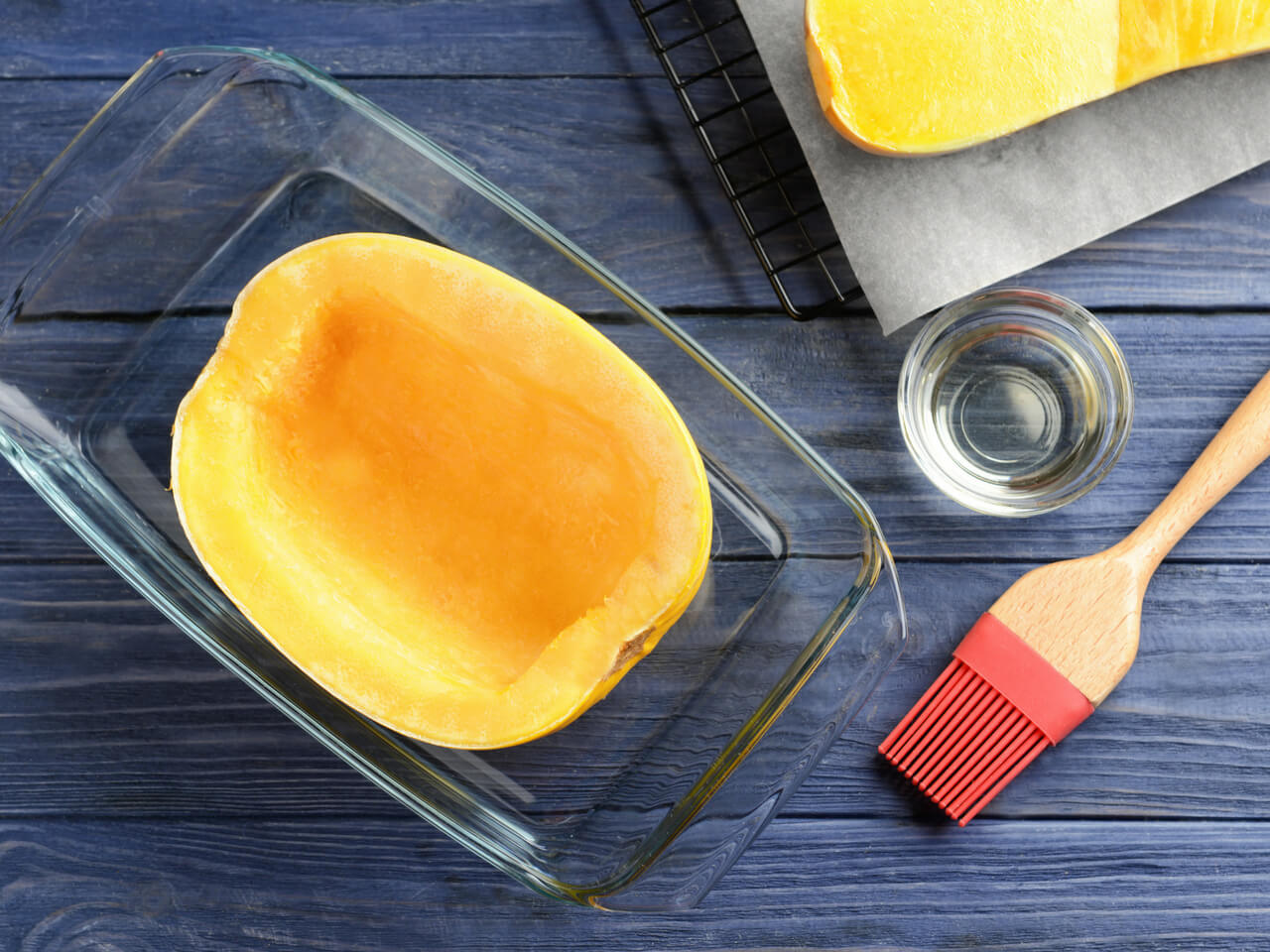
Expert Tips for Cooking Spaghetti Squash
- Tip 1: If you want to avoid mushy noodles, Salt the spaghetti squash first to draw out moisture: Letting cut spaghetti squash sit with coarse salt on it for 15-20 minutes draws out a ton of moisture from inside the squash. Less moisture = less mushy noodles.
- Tip 2: Don’t over salt your squash. Watery spaghetti squash is typical with too much salt before baking. Adding too much oil before roasting can also cause spaghetti squash to become soggy while baking, or your may have cooked your squash for too long.
- Tip 3: If your squash is particularly small, check after 10 minutes just to ensure you don’t overcook it. To check for doneness, flip one half of the spaghetti squash over and run a fork down the top edge of the squash.
Spaghetti Squash Recipes to Try
⭐️ ⭐️ ⭐️ ⭐️ ⭐️
Did you try this?
Please leave a star rating and review below!
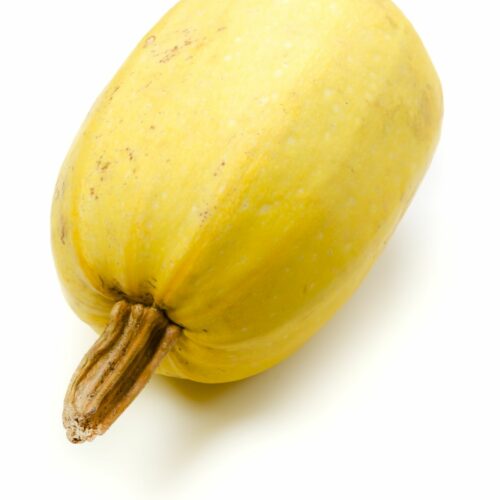
How to Store Spaghetti Squash
Equipment
- 1 Freezer Safe Bag
Materials
- 1 whole spaghetti squash
Instructions
- Step 1: freezing spaghetti squashIf you cooked your spaghetti squash but do not plan to consume it right away, place in an air tight container and place in the freezer. Your squash will last up to six months frozen.A second method is to place the “noodles” into a freezer safe bag, squeeze all of the air out of the bag, and place in the freezer.If your spaghetti squash has not been cooked, just place your whole squash in the freezer. This will last for up to a year.To thaw, place in the refrigerator overnight.
- Step 2: storing in the refrigeratorIf you’ve already cooked the spaghetti squash, it can be stored in the refrigerator. Just place it in an airtight container and it should stay fresh for up to a week.
- Step 3: uncooked spaghetti squashWhen storing uncooked spaghetti squash, the best place to keep it is in the pantry in a cool, dry place. This will help it stay fresh for longer.Make sure to check it regularly for signs of spoilage, such as mold or soft spots. Your squash will stay fresh this way for up to 3 months.
Expert Tips
Expert Tips Cooking Spaghetti Squash
- Tip 1: If you want to avoid mushy noodles, Salt the spaghetti squash first to draw out moisture: Letting cut spaghetti squash sit with coarse salt on it for 15-20 minutes draws out a ton of moisture from inside the squash. Less moisture = less mushy noodles.
- Tip 2: Don’t over salt your squash. Watery baked spaghetti squash was typically salted too heavily before baking. Adding too much oil before roasting can also cause spaghetti squash to become soggy while baking, or your may have cooked your squash for too long.
- Tip 3: If your squash is particularly small, check after 10 minutes just to ensure you don’t overcook it. To check for doneness, flip one half of the spaghetti squash over and run a fork down the top edge of the squash.



